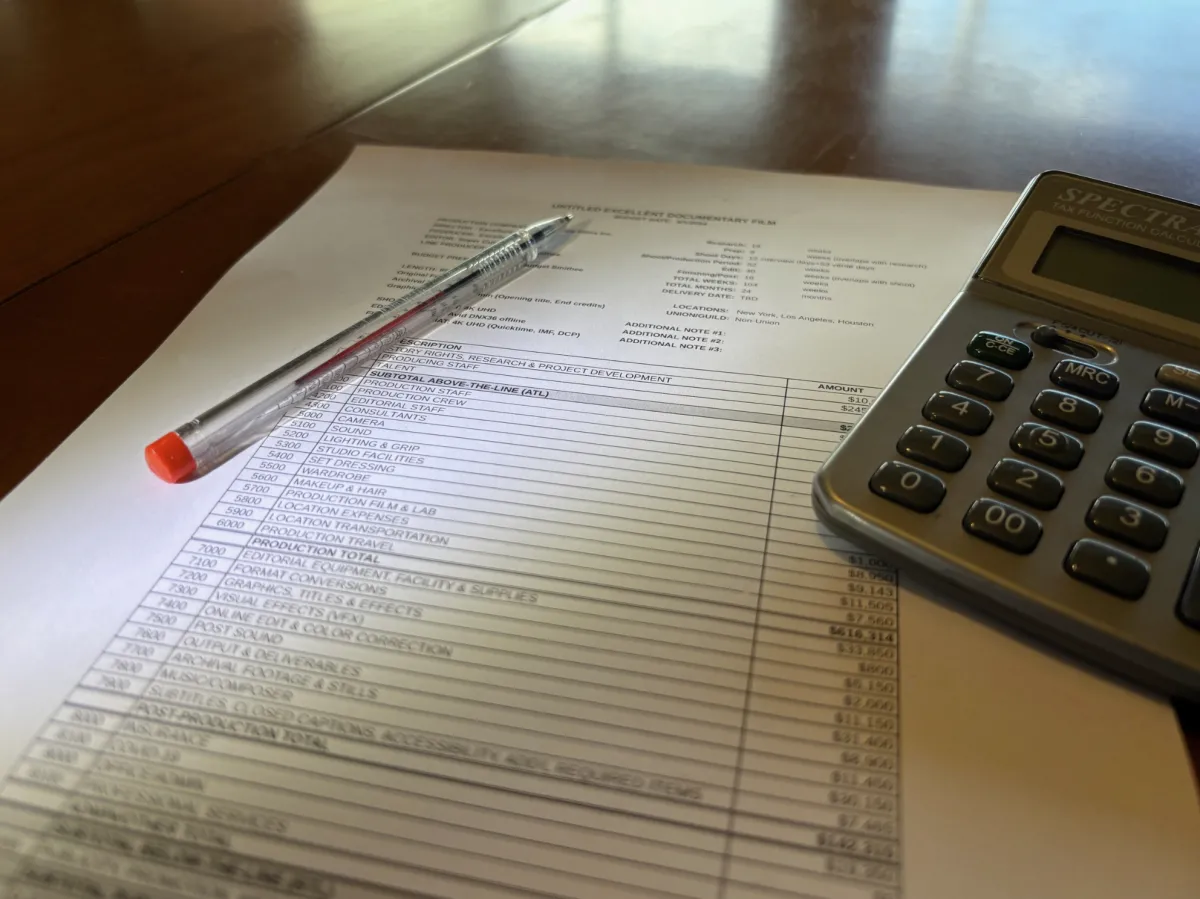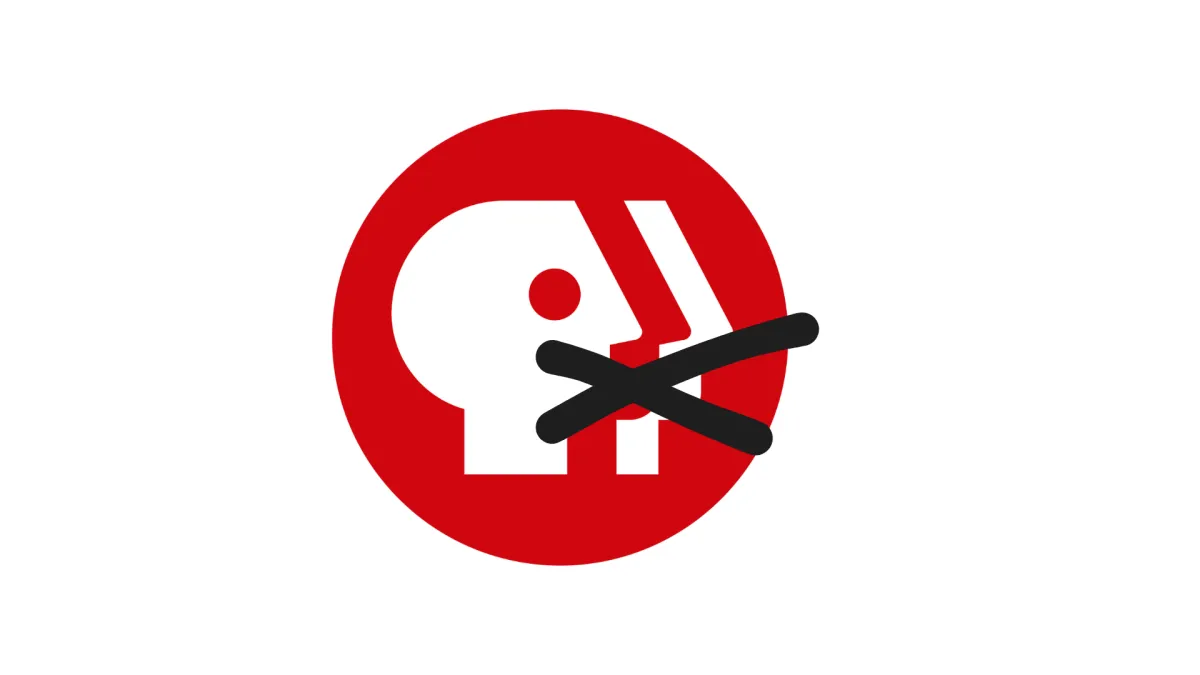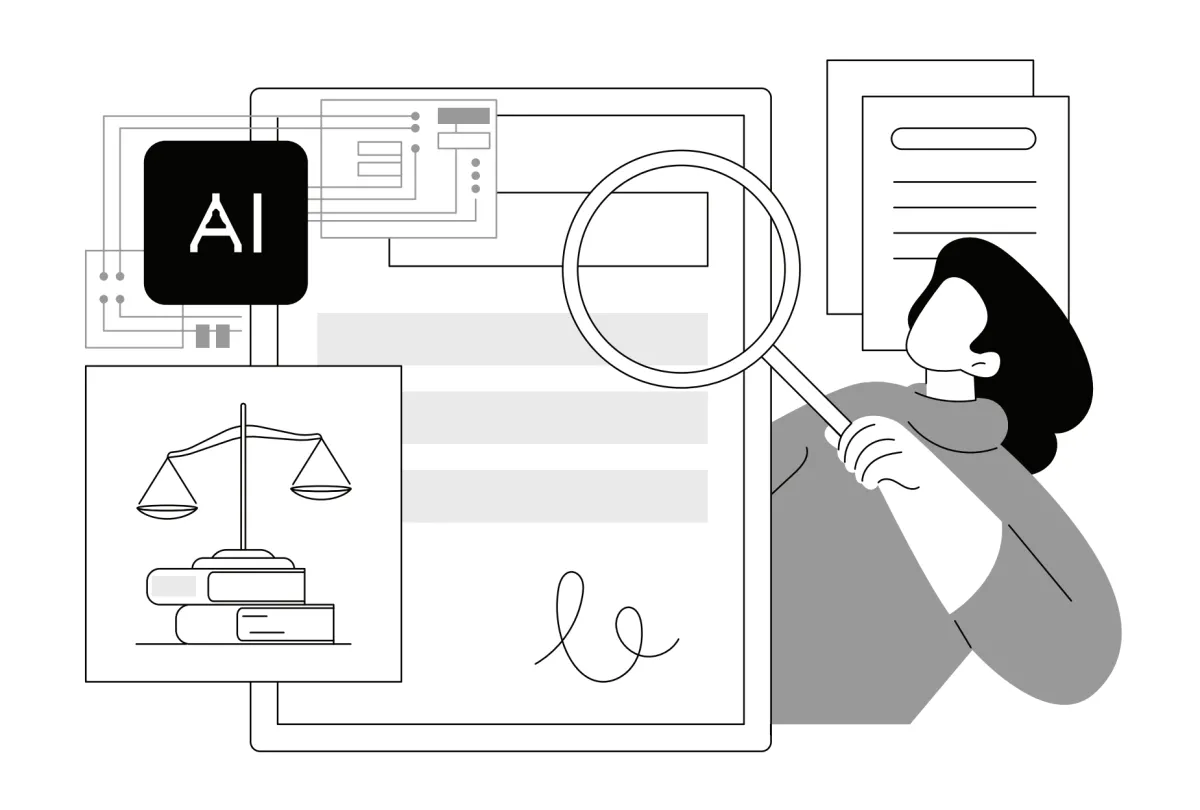
Work in Progress: Archival Producers Alliance Release New “Working with Archival Producers” Guidelines

The Archival Producers Alliance table at Getting Real ’24. Image credit: Urbanite LA
Established in 2023 by co-founders Stephanie Jenkins, Rachel Antell and Jen Petrucelli, the Archival Producers Alliance has steadily worked to elucidate the role of archival producers in nonfiction media. Originally conceived by Jenkins as an online listserv that would connect archival-focused workers within the industry, the APA now boasts 500 members and counting. With a concerted and collective focus on drafting best practices for their profession, the APA first published guidelines on working with generative AI in September 2024.
Now, APA members Debra McClutchy and Eugen Bräunig are eager to discuss the comprehensive new guidelines they’ve co-authored, “Working with Archival Producers.” From breaking down their roles during various stages of production to ideal onboarding scenarios, the document is, first and foremost, a means to advocate for a tangible job description and reasonable workloads. Despite the desire to establish concrete parameters for this work, there is also ample room for adjustment. (“We’d like to also rebrand the archival producer as a creative editorial collaborator,” per Bräunig.)
A few days after I spoke with McClutchy and Bräunig for Documentary, news broke concerning the unlawful dismissal of Dr. Colleen Shogan, Archivist of the United States, by the President. In this sense, the APA must assume yet another position: that of outspoken defenders of the motion picture film records of the U.S. from federal tampering.
“Speaking as individuals and as documentary filmmakers, we firmly believe that the American people deserve to have their rich history preserved by a group of archive professionals who uphold democratic values and recognize the vital role that archives play in educating the public and serving as reliable sources of information,” the two shared in a joint statement. “It’s deeply concerning to see our nation’s most trusted archival institutions being politicized. Once that door is opened, how do we ensure an unbiased curation of records, uncompromised access to materials, and the authenticity and accuracy of historical documentation—free from political influence? If this trajectory continues, we fear it could lead to forms of censorship, whether through restricted access, selective content curation, or even the altering of historical records.”
In our conversation below, McClutchy and Bräunig discuss how they came to co-author this new guideline, how it complements the APA’s previous document on GenAI best practices, and member feedback. This interview has been edited.
DOCUMENTARY: I’d love some background on how you both came together to write this guide. What made it clear that there was a pressing need for something like this?
EUGEN BRÄUNIG: As with so many initiatives that APA has started to tackle, it’s been a very organic process. We have all been remotely connecting on a pretty regular basis. During those meetings, we’d figure out that there are certain people who are gravitating more toward one subject matter or another. We were both like, “This feels like a good thing to explore together.”
On some level, we’re constantly explaining what we do. We thought that this could be a practical tool that will make it easier for us, the people who work with us or those who are just curious about archival. With this document, I think we can demystify the process. People can hopefully now feel like, “Oh, great, I’m well-equipped to approach an archival producer with all the necessary information and all of the right questions.”
DEBRA MCCLUTCHY: What an archival producer does can be mysterious and it’s had different terminology across the years. Associate producers used to do a lot of archival work before there was technically an archival producer role. We’re sometimes called “researchers,” but that doesn’t fully encompass everything that can go into the role. This guide was a great way to just really lay it out. It was really fun working with Eugen and APA on it because it was really informative. Every project is unique; one of your jobs might be more research-heavy than clearance-heavy, and then another job might be the opposite. These things can really vary and it was interesting to learn what other archival producers were doing when hired on a job.
EB: It unexpectedly became a poll of what these various experiences have been for people. We had so many bonding moments when getting input, notes, and commentary from the larger group where we’d learn, “Okay, it’s not just me, everybody’s having these same issues or frequent misconceptions of what the process is.” While we’re all in our separate corners across the country, there are some patterns in our experiences.
D: The APA released a best practices guideline for generative AI back in September. This new guide also mentions the importance of consulting with archival producers when utilizing this emerging technology in a project. Can you elaborate more on how these guidelines are in conversation with each other and this specific cultural moment?
EB: We really didn’t want to strike a tone that’s basically telling people what to do. This is really a collective attempt to advocate for transparency and a collective move forward. As the folks who work in this industry, we can take certain things for granted. The authenticity of something could be very obvious to some of us, it may be very different for some of our viewers. That’s something at the core of the GenAI guidelines.
The conversation between those two documents, in my mind, is that it’s unclear on some of these productions who is actually going to be responsible for tracking GenAI elements. But the archival producer is uniquely equipped to bring expertise to this assessment of, “Hey, is this an authentic photograph? If it has been generated, what may be the underlying copyright, because this looks awfully close to a picture by so-and-so.” Maybe this AI was training on this photographer’s work, and that’s why this picture, which is not authentic, looks very similar.
DM: A lot of the conversation around AI comes from Silicon Valley. As Eugen said, it wasn’t created to set up rules, necessarily, but to come up with a philosophical and ethical document that people can use to wrestle with these ideas and figure out what’s going to work for them and their production. It’s about maintaining the ethical standards around documentary that have always been there: transparency and adherence to a truth. And in this particular political moment, I’m hoping that we can all still agree on some collective truths, because those are being undermined right now.
One thing that’s been really great about generating a conversation around AI is that it allows us to talk about the value of physical materials and the archives that house all of them. They are complicated institutions and historical materials are complicated. There are biases, but they can be wrestled with in a really rich way. Focusing on the importance of archival institutions is a way that we can keep talking about how important our role is in these productions.
D: As co-writers, what other sources did you utilize when it came to gathering and disseminating this information? Were there reference points, did you conduct interviews, etc?
DM: We always knew that we were going to open it up to all 500-odd members, but we did start with a small core team and just talked openly: What is your role? What do you do? Are you more of like a one-person team or are you working within a hierarchy of various producers?
EB: It was actually surprising to me how long the process really took and how much nuance we had to bring to it. When you’re writing, you don’t immediately think of every scenario. It was a lot of writing, rewriting, discussion, and then individual outreach to peers.
DM: There was a point when [Eugen] and I had to take the reins and write. We would be writing and editing and then comments would be coming in from Rachel, Stephanie, and Jennifer. We did bring others into the process; Prudence Arndt was an editor and Meaghan Kelly did the graphic design. It was a collaborative effort in every way. We had so many valid perspectives going into what it actually means to work with an archival producer.
D: In what ways does this guide, and perhaps the APA at large, reflect the industry-wide changes regarding archival practices?
DM: The document shows a realistic job description of what an archival producer does on an independent documentary as well as on a series. The former, for instance, often only has one archival producer, which is a lot of work to take on. If filmmakers can read this guide and understand, “Oh we may want a budget for two,” or “We may want a budget for an archival producer plus an extra researcher,” you can meet expectations and manage expectations.
EB: I feel like right now there are some headwinds that many of us are feeling or are at least aware of. With peak TV now dating a few years back and us all collectively moving into some new uncharted territory, we’re experiencing a situation that was already challenging and is now just unrealistic. That’s not something that we’re talking about in this document, but hopefully there can be an element of advocacy for healthier budgets that are respectful to the individual that ultimately does the work on these docs and shows. Especially in the absence of a union that’s representing a certain group like archival producers, it’s important to make sure that the individual is valued, that their time is respected and that we’re not trying to take advantage of them—consciously or subconsciously—by simply not budgeting adequately.
D: What hurdles might certain filmmakers face in attempting to adhere to these standards on their own productions?
DM: Money is always a challenge. We’re hoping this guide will help filmmakers understand that if they can do a consultation with archival producers before they even start their film, that could be so valuable in terms of managing expectations and answering questions: What is a licensing fee? How much does it cost to get footage for you know all media worldwide in perpetuity? What does that actually mean? How do you manage a budget where there are 30-second minimums that you have to maintain? How much are you going to have to put into your budget, production-wise, for that? A consultation really early on with an archival producer can be so helpful for a filmmaker and for a series as well.
EB: We’d like to also rebrand the archival producer as a creative editorial collaborator. We love to think about story and we have ideas about how archival materials can really drive one. There’s also the collaboration with the editor—literally sitting in the edit, shaping the story and making the archival material shine—while also being budget-conscious and conscious of legal hurdles. That’s our jam!
There tend to be situations where archival and clearance is a bit of an afterthought. Like, “Let’s make our movie and then engage a person who knows about these things during post.” That may be tempting, but a lot of times what people are not aware of is that bringing an archival producer on board early will actually save you money. If we are joining a team late in the process, there’s essentially damage that needs to be undone—you have all this unsourced material, less than ideal tracking systems, no sense of what the materials will cost, and whether those even align remotely with what you have budgeted. You’ve already put so much work into this and now we have to do so much of it over again. Things that could have been streamlined are suddenly really painful because, at every cut stage, we’re solving hundreds of little mysteries in your timeline.
D: What feedback have you received about the realized guide so far, whether from the hundreds of APA members or others in the industry?
DM: Eugen and I were just on a Zoom event with the Documentary Producers Alliance and Alliance of Documentary Editors presenting the guideline and the feedback that we got was great. They found it to be a really valuable document and that was wonderful to know.
EB: One attendee sent me an email saying that he was currently at an archival doc event in D.C. He was so glad that he tuned in for that talk and he was going to try and reiterate some of these points at a panel that he was attending. Things like that make me realize, “Okay, this will slowly spread. It won’t reach everyone, but over time, maybe this can have some impact.” That would be really exciting.
Natalia Keogan is a critic and journalist based in NYC. Her bylines include Filmmaker magazine, A.V. Club, Reverse Shot, and Paste, amongst others.




